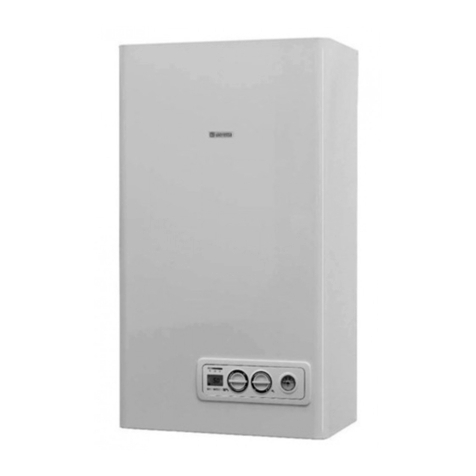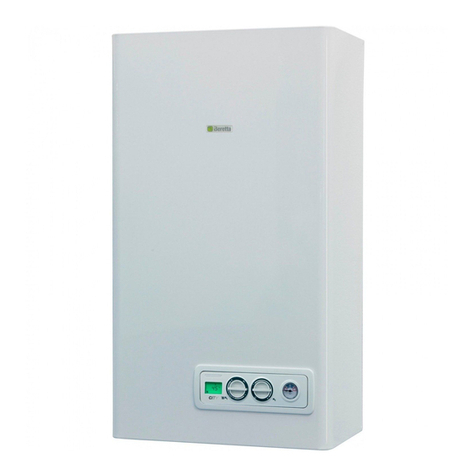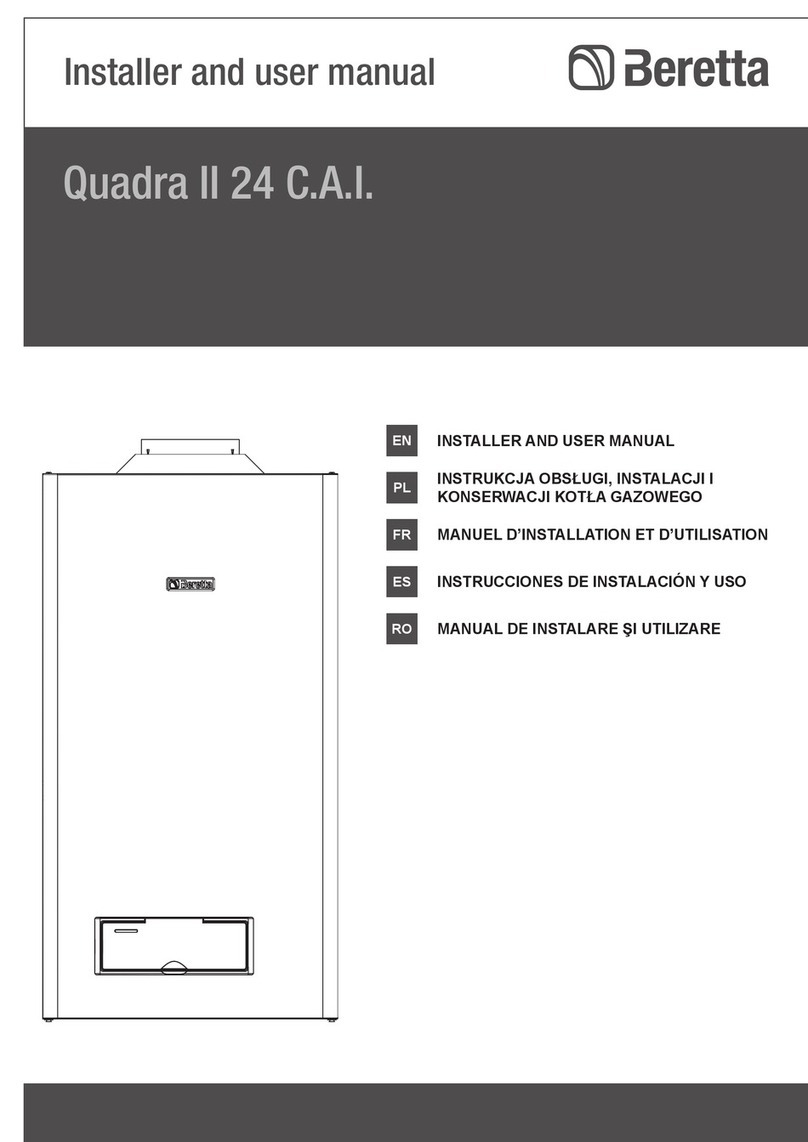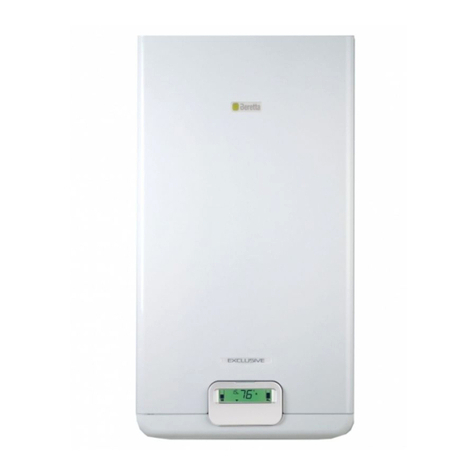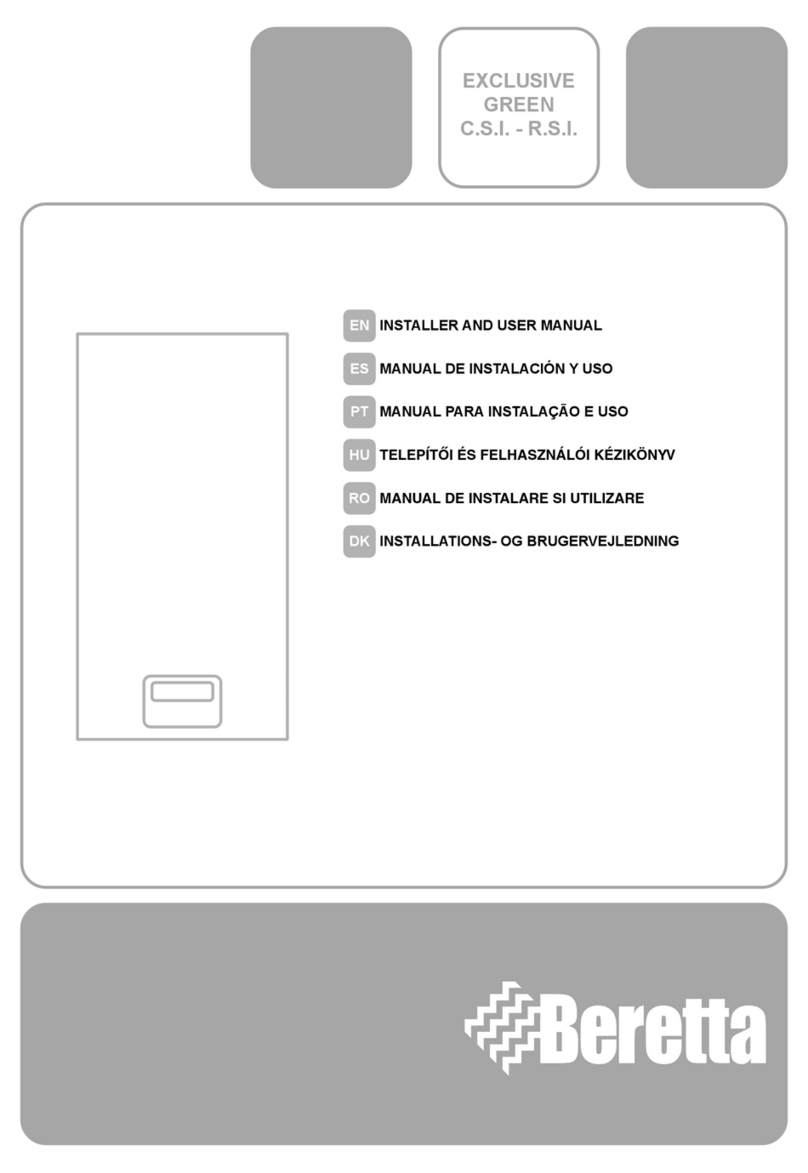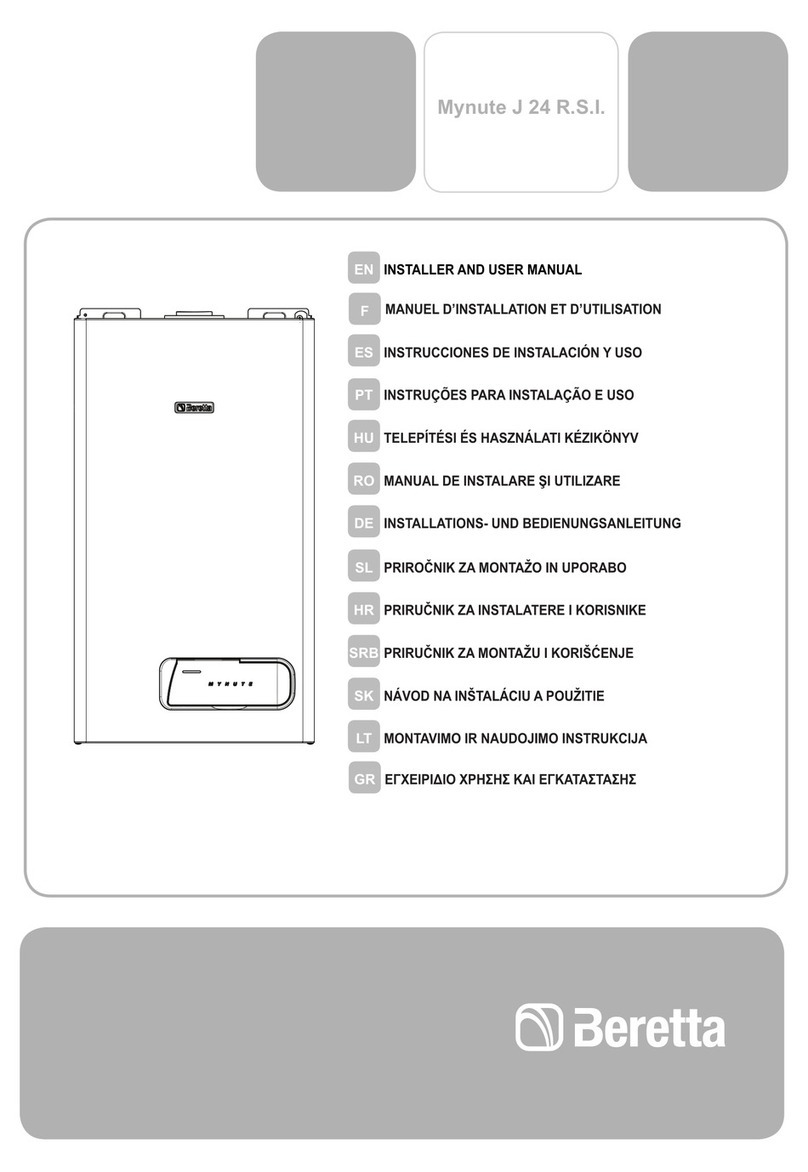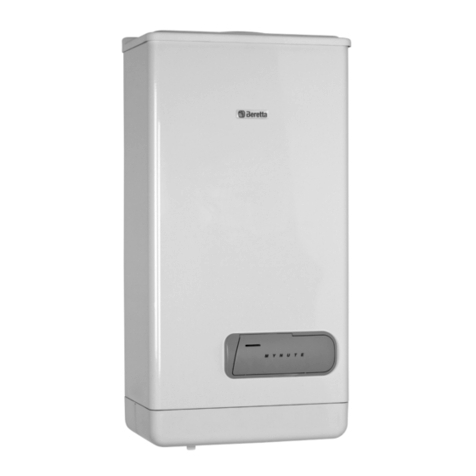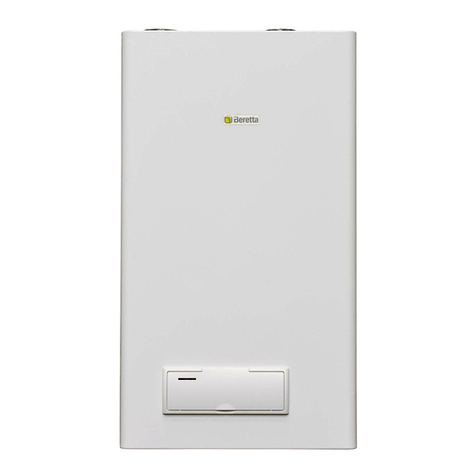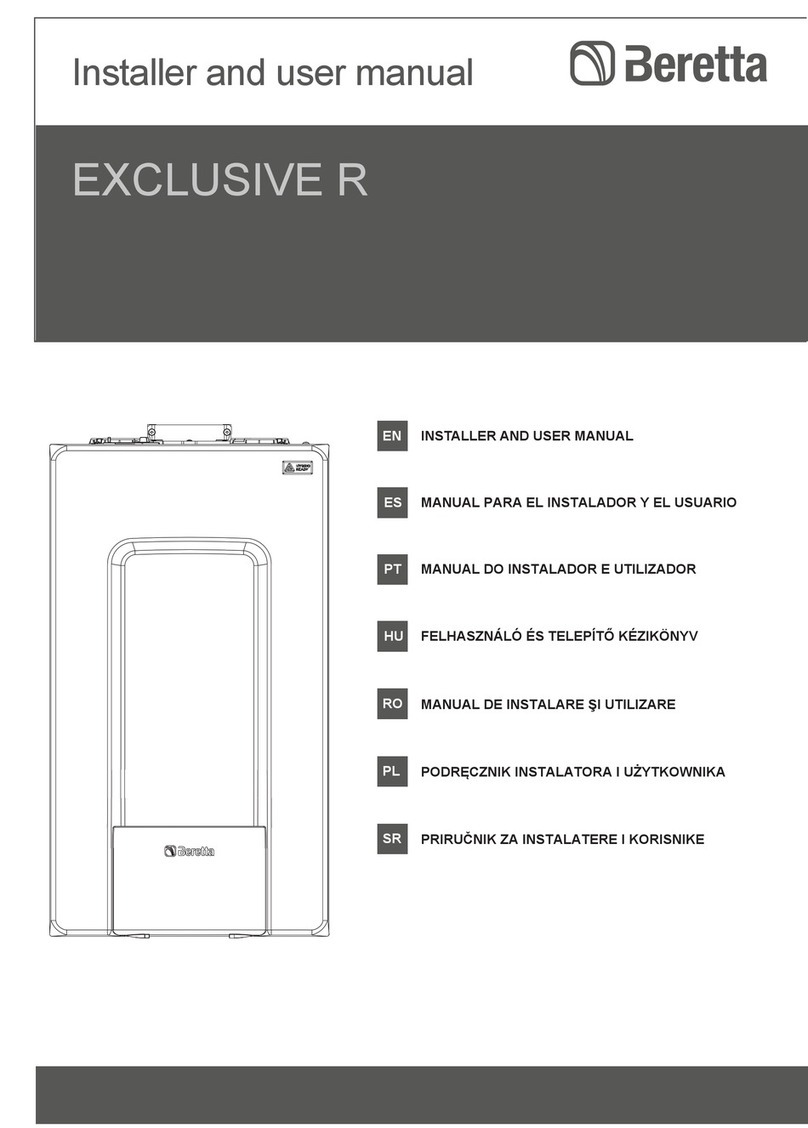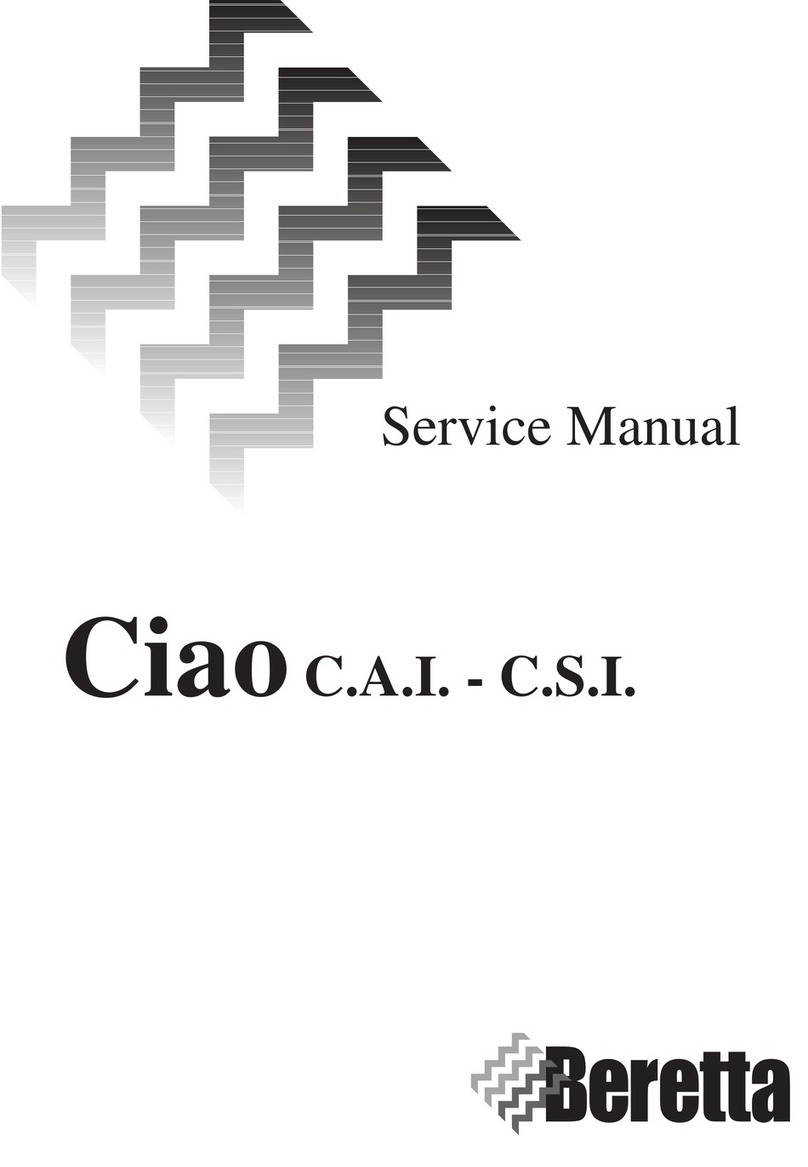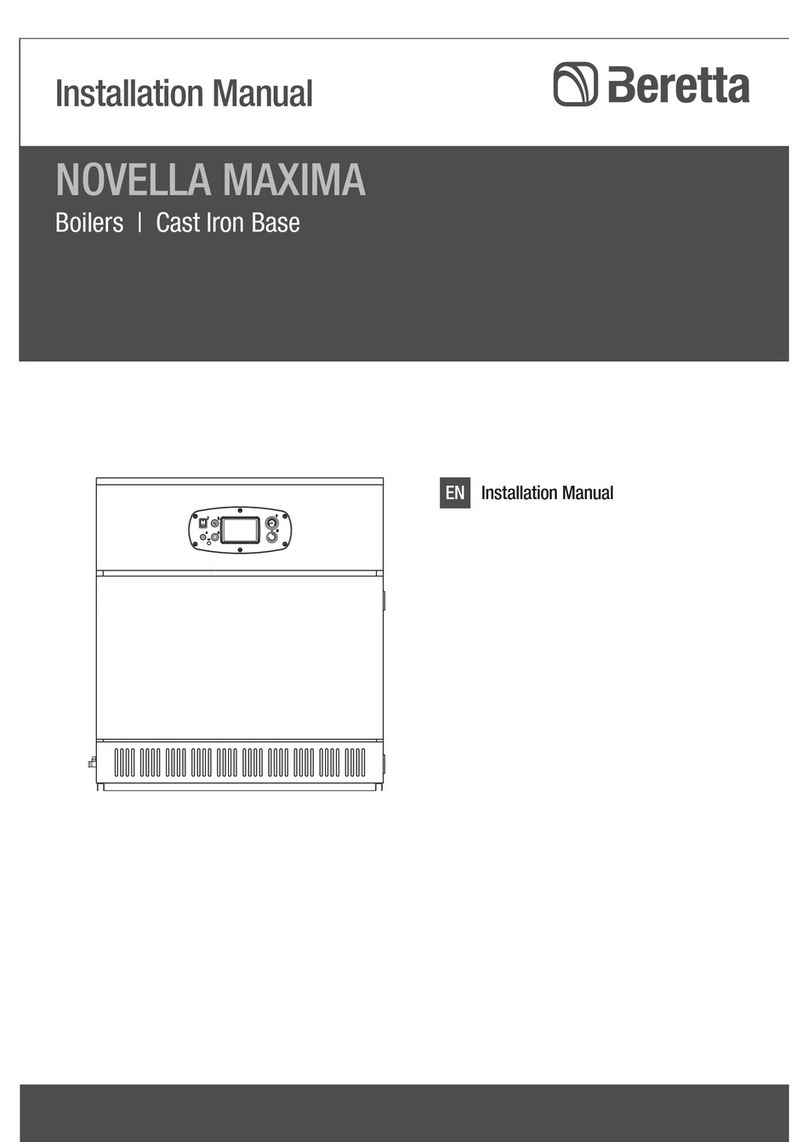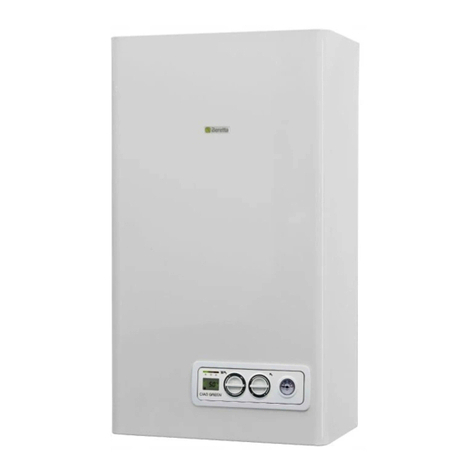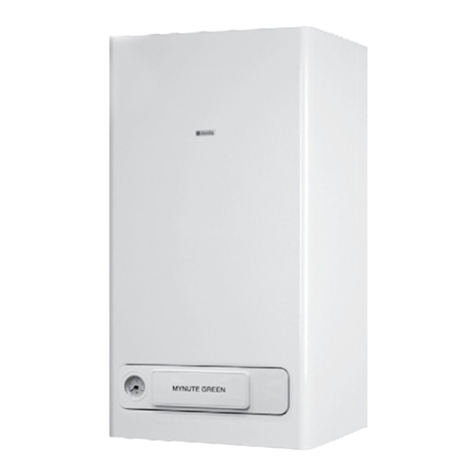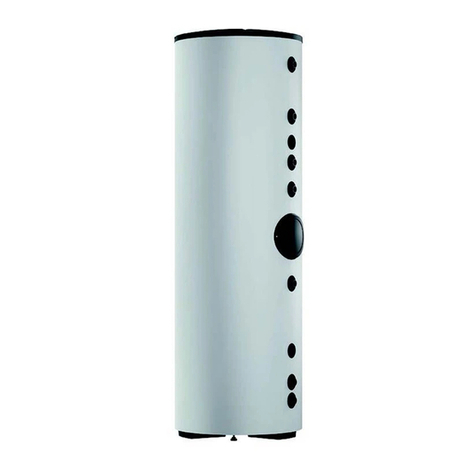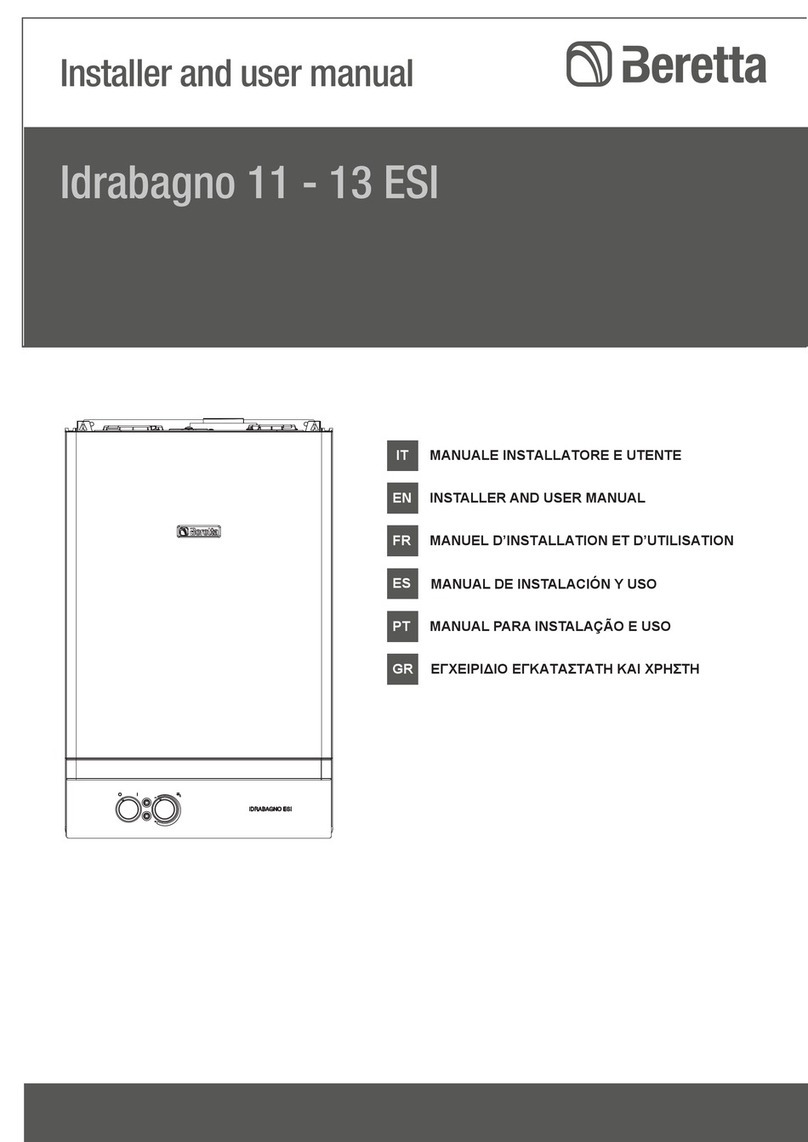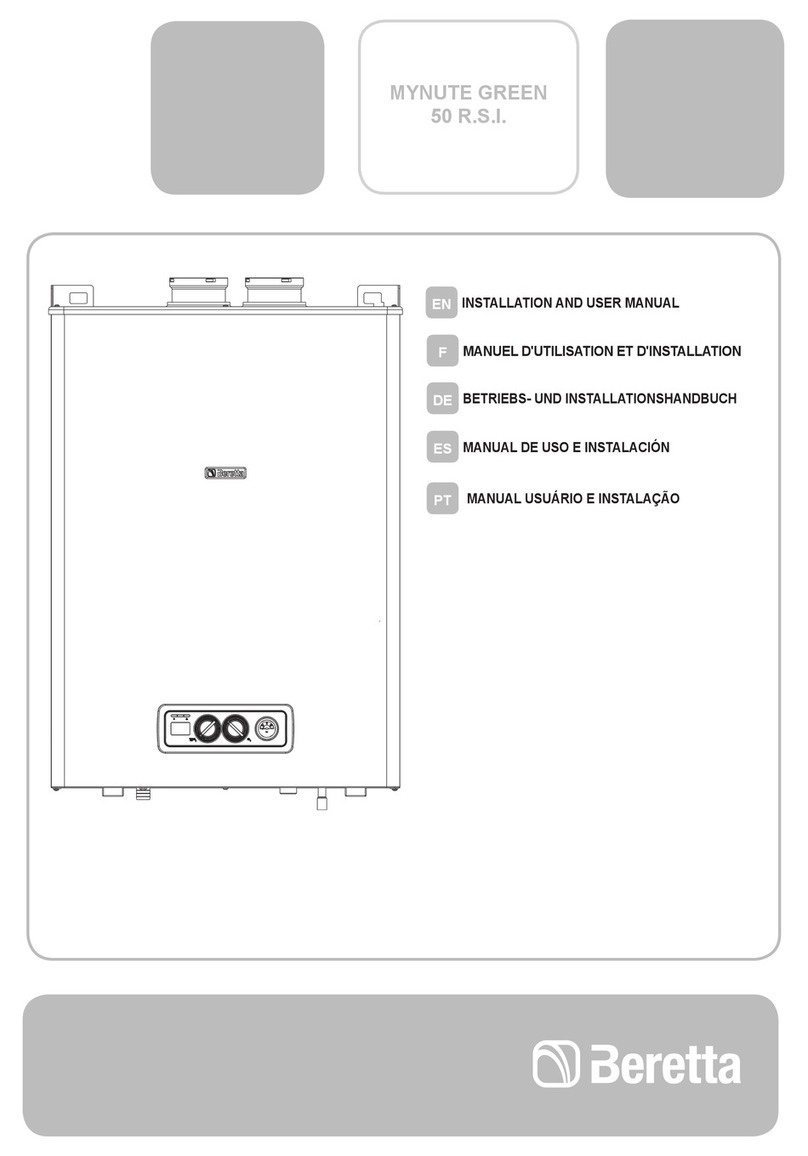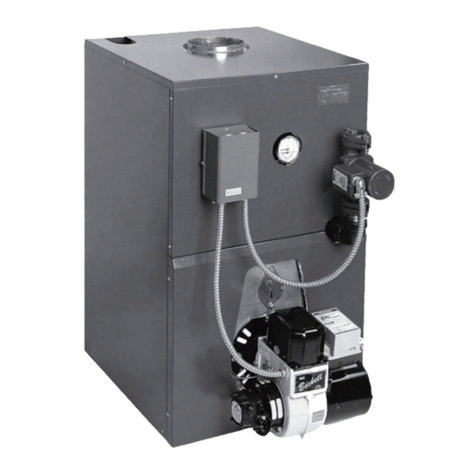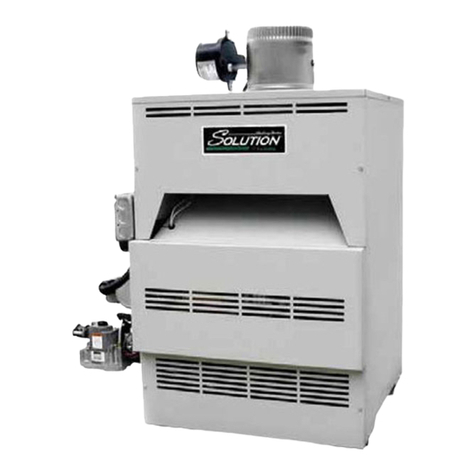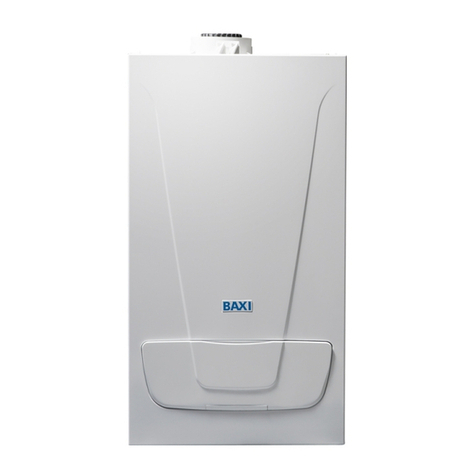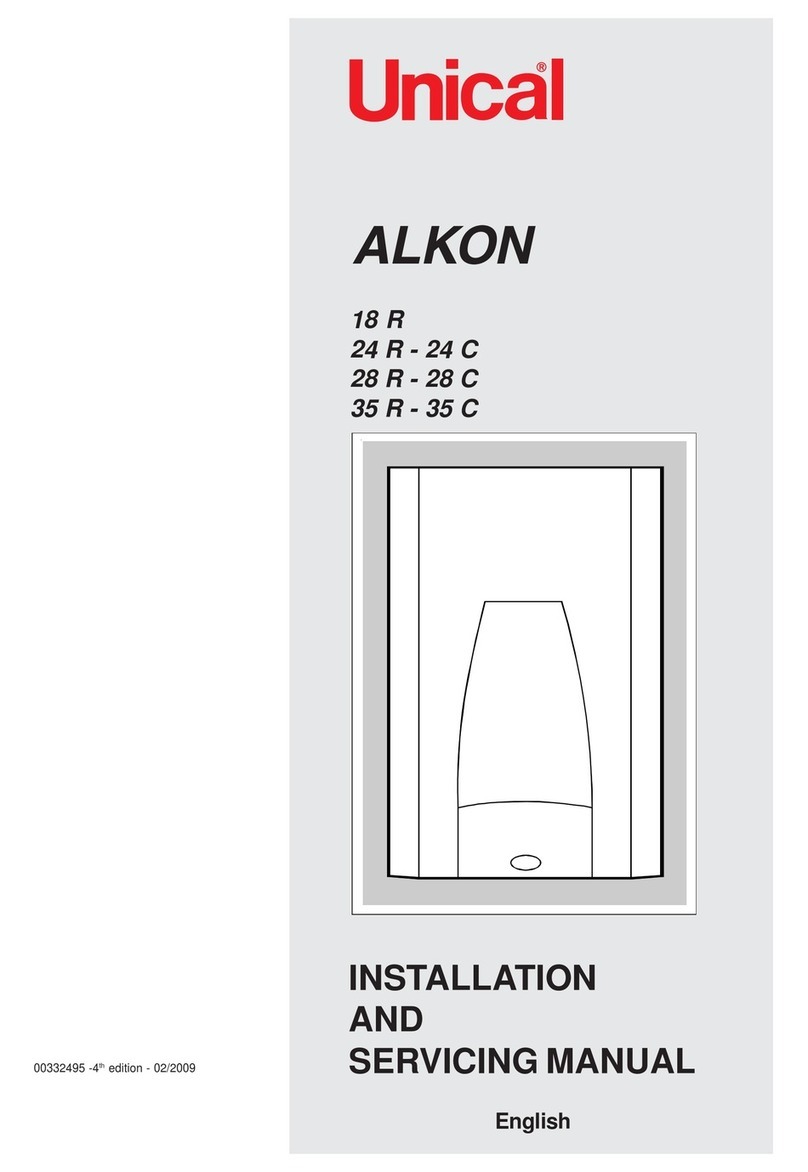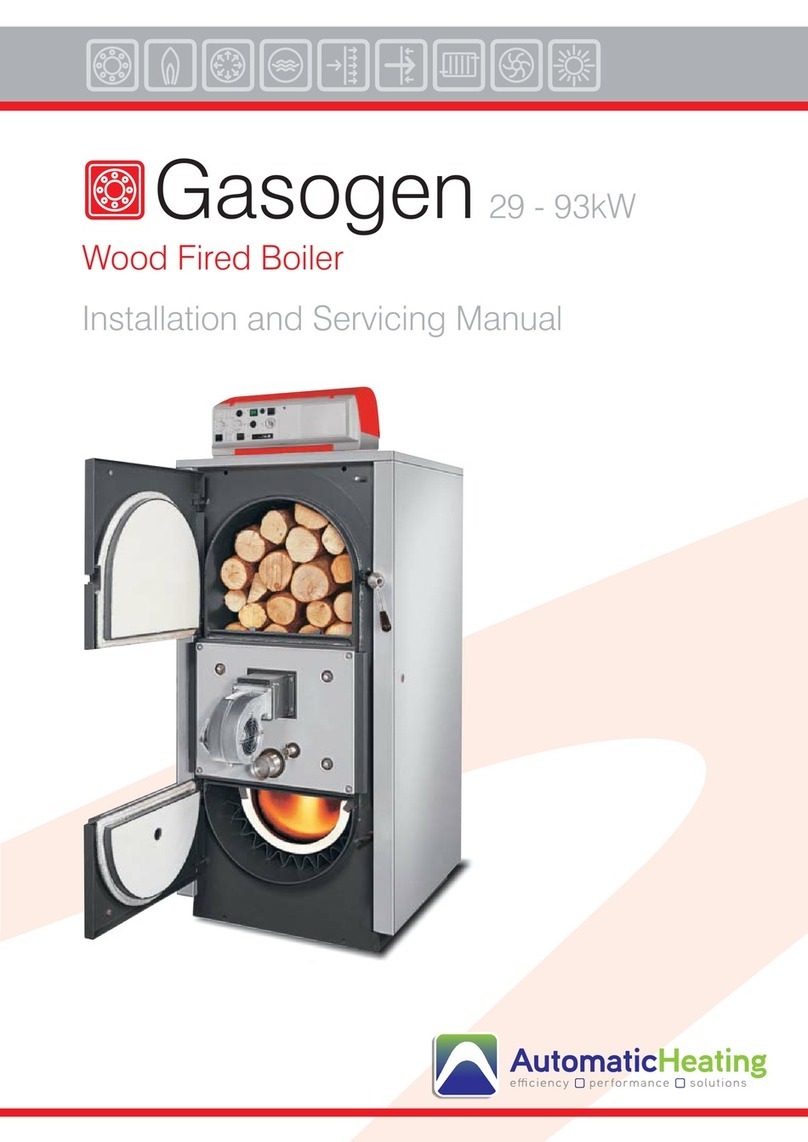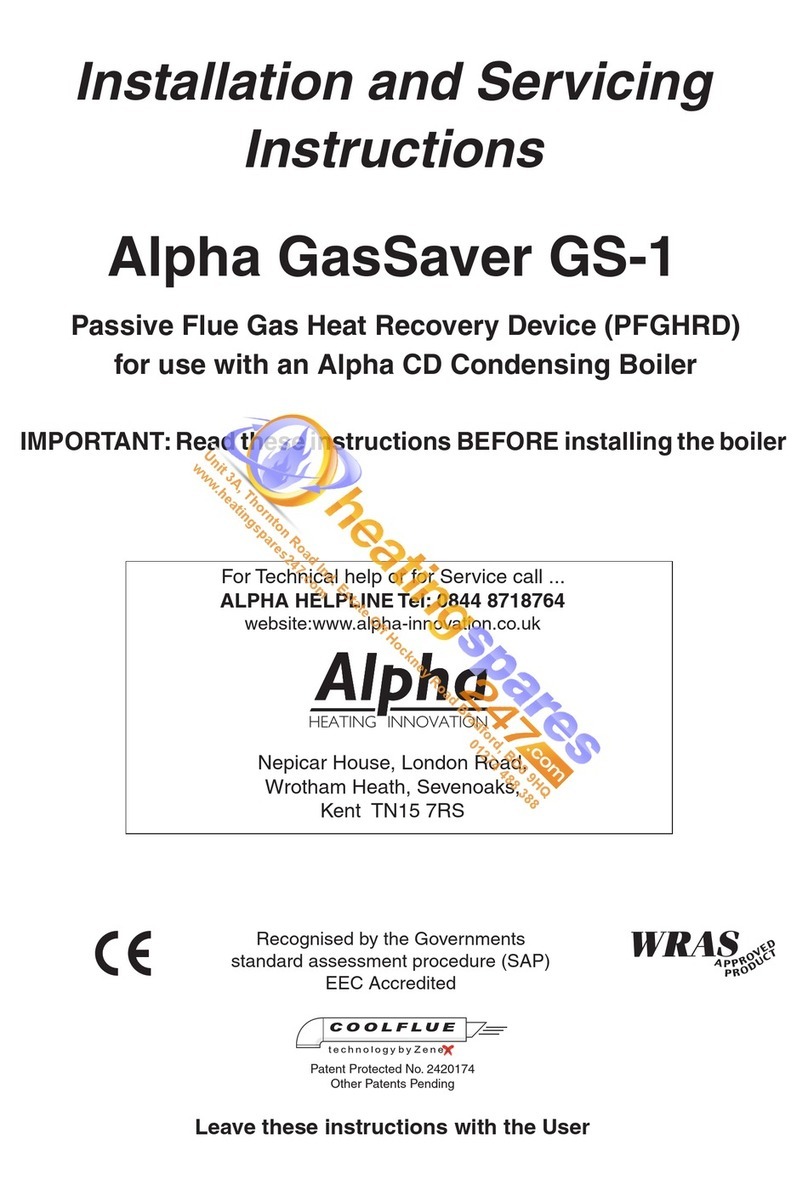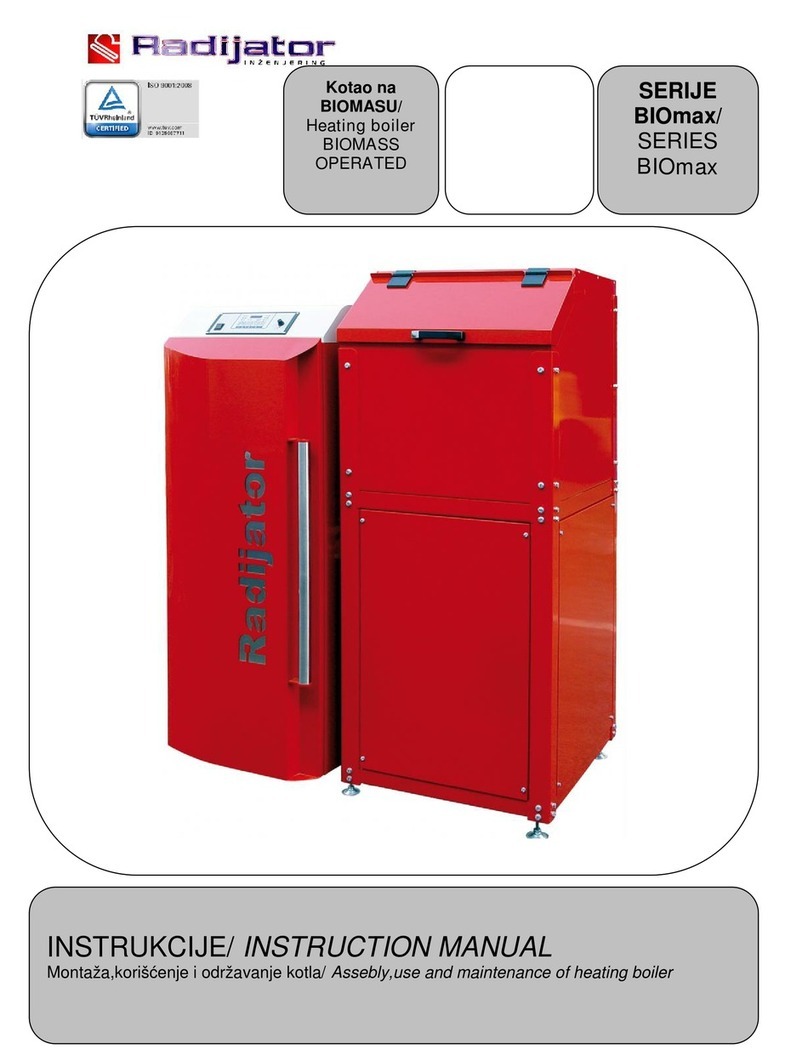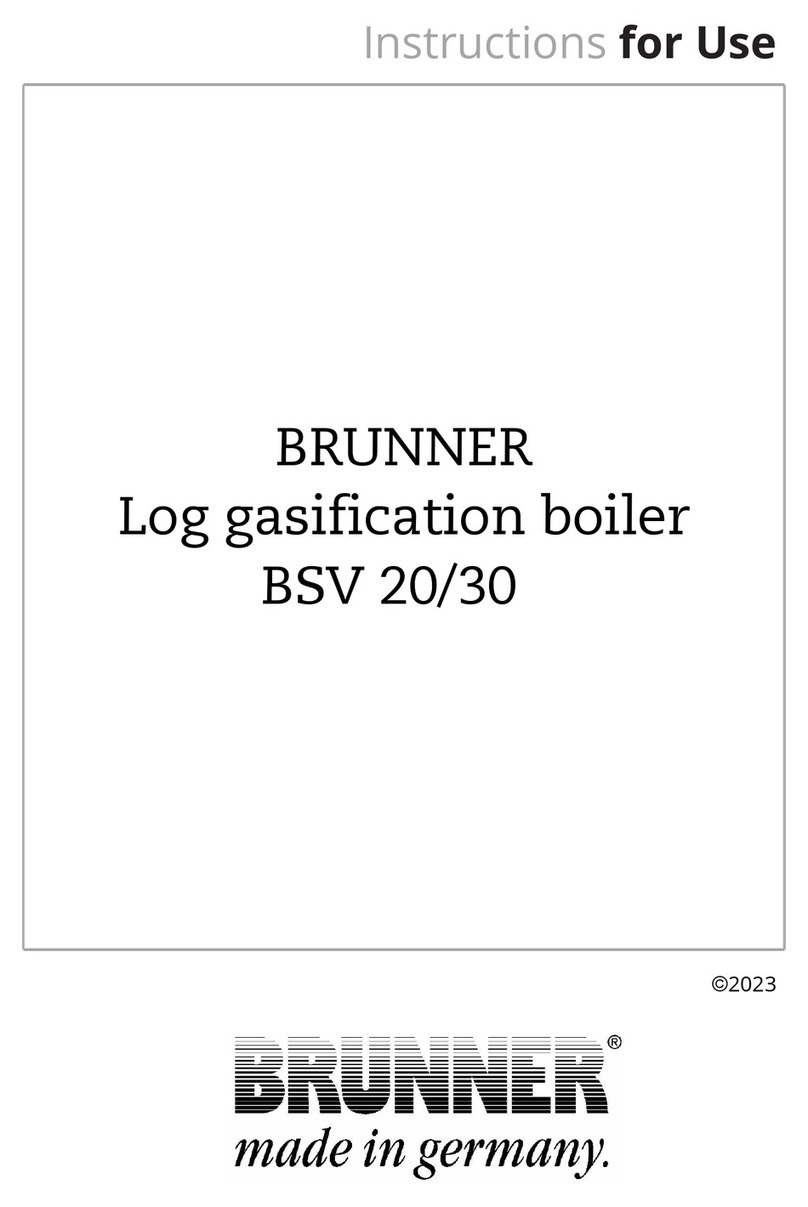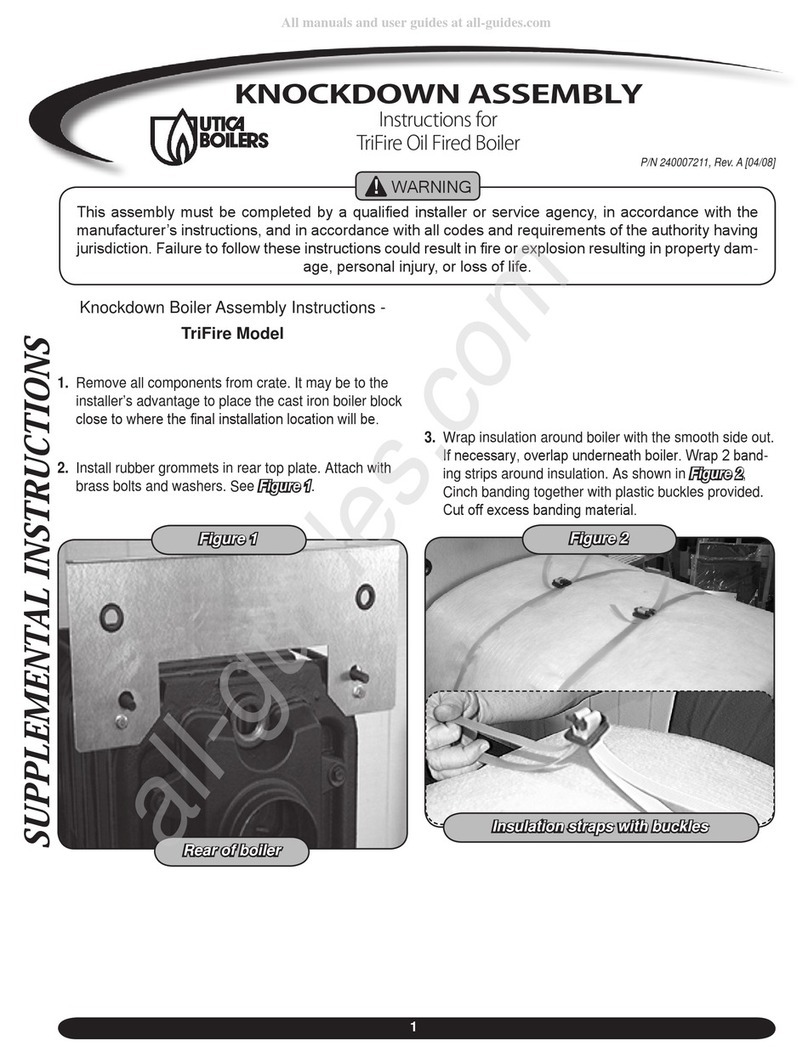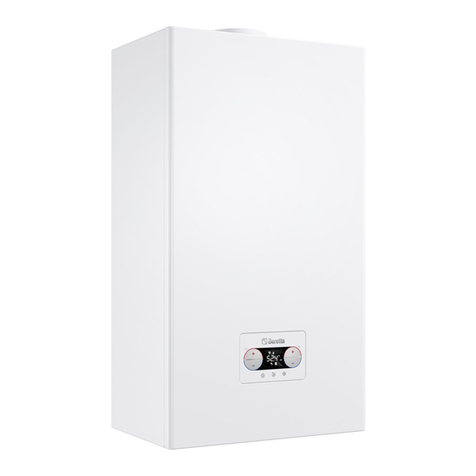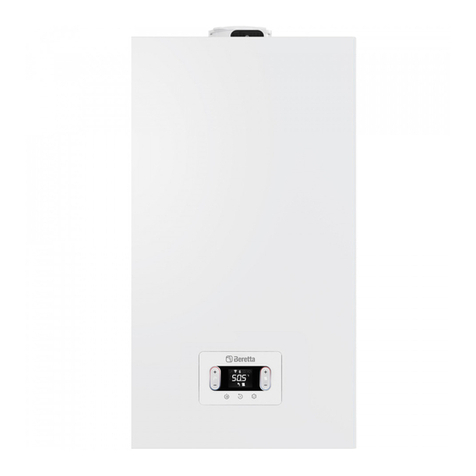
ENGLISH
8
MySMART
9
MySMART R.S.I. adjustments table
Maximum
number of fan
rotations
rpm
Ø 50
pipework
pipes
maximum
length
Ø 60
pipework
pipes
maximum
length
Ø 80
pipework
pipes
maximum
length
ΔP at the
boiler
output
with max
length (*)
DHW CH m m m Pa
4.500 4.500 2,9 12,4 80 120
4.600 4.600 4,7 16,8 92 150
4.700 4.700 7,3 23,1 127 193
4.800 4.800 9,5(*) 28,5(*) 157(*) 230
4.900 4.900 10,8(*) 31,8(*) 175(*) 253
5.000 5.000 12,6(*) 36,1(*) 198(*) 282
5.100 5.100 15,1(*) 42,3(*) 233(*) 325
5.200 5.200 19,0(*) 51,8(*) 285(*) 390
(*) Maximum installable lenght only with exhaust pipes in H1 class
NOTE
If p
ipes different than those in the Beretta catalogue are used you must
see the ΔP values on the above tables to calculate the maximum length
of the pipes.
The Ø 60 and Ø 50 configurations have experimental, laboratory checked
data.
In the event of installations other than those indicated in the “base
configurations” and “adjustments” table, see the equivalent Ø 80 - Ø
60 or Ø 50 linear lengths shown below.
In any case the maximum lengths declared in the booklet are
guaranteed and it is essential that they are not exceeded.
Ø 60 component Linear equivalent in
metres Ø 80 (m)
45° Ø 60 curve 5
90° Ø 60 curve 8
0.5 m Ø 60 extension 2.5
1.0 m Ø 60 extension 5.5
2.0 m Ø 60 extension 12
Ø 50 COMPONENT Linear equivalent in
metres Ø 80 (m)
45° Ø 50 curve 12,3
90° Ø 50 curve 19,6
0.5 m Ø 50 extension 6,1
1.0 m Ø 50 extension 13,5
2.0 m Ø 560 extension 29,5
3.12 Installation on collective flues in positive pressure
The collective flue is a gas discharge system suitable for collecting
and expelling the combustion products of several appliances installed
on several floors of a building (fig. 18).
The collective flues in positive pressure can be used only for type C
condensing appliances. Consequently the B53P/B23P configuration
is not permitted.
Installation of the boiler on collective flues in pressure is permitted
only at G20 using a specific check valve, supplied as an accessory.
See the related instructions for the assembly procedure.
The boiler is sized to operate correctly up to a maximum internal
pressure of the smoke pipe no higher than the value shown in the
multigas table.
Complete the check valve assembly operations and proceed with
adjustment of the number of fan rotations as shown in the multigas
table.
Ensure that the air suction pipes and combustion product outlet are
airtight.
Installation of the check valve (fig. 19) requires the application of the
ATTENTION label that comes with the same accessory on a visible
part of the boiler shell. Applying the label is essential for safety during
maintenance or replacement of the boiler and/or the collective flue.
WARNINGS
The manufacturer will not be liable in the event of failure to
apply the check valve and the related label prior to placing the
boiler in service.
The appliances connected to a collected flue must all be of the
same type and have equivalent combustion characteristics.
The number of appliances that can be connected to a collective
flue in positive pressure is defined by the smoke pipe designer.
MAINTENANCE FOR APPLICATION IN A COLLECTIVE FLUE
UNDER PRESSURE
During scheduled maintenance on the appliance you must also
check the condition of the check valve in order to guarantee correct
operation and safety of the system.
Before proceeding with maintenance you must conduct an analysis
of the combustion product and check the boiler operating status.
In the event of maintenance on the boiler's combustion circuit
(gas discharge pipes, condensate syphon, burner, electrode
conveyors) you must close the gas discharge pipe that comes
from the smoke pipe under pressure and check the seal.
Subsequently:
- Remove electrical power by setting the system's main switch to “off”
- Close the gas interception taps
- Remove the shell
- Unhook the instrument panel and rotate it downward
- Unhook and remove the air box cover
- After undoing the related fixing screws, remove the right side of
the air box
- Undo the nut that secures the gas train valve to the air box
- Undo and remove the mixer connection gas train (A, fig. 20)
- Remove the ignition electrode and flame detection electrical
connections and the fan electrical connections
- Undo the 4 screws that secure the air gas conveyor to the main
heat exchanger (B, fig. 20)
- Remove the conveyor-fan assembly from the heat exchanger (C,
fig. 20), taking great care not to damage the burner insulating panel
- To access the check valve remove the fan by undoing the 4 screws
(D, fig. 21) that secure it to the conveyor
- Ensure that there is no material deposited on the check valve
membrane and remove any you may find, ensuring there is no
damage.
- Check the cor
rect opening and closing operation of the valve
- Reassemble the components working in reverse order, ensuring
that the check valve is reassembled in the correct direction (fig. 21)
Failure to observe the above may lead to abnormal operation
of the check valve and consequent differences in the boiler's
performance, up to failure to operate.
Failure to observe what is described here may compromise the
safety of people and animals due to possible carbon monoxide
leaks from the smoke pipe.
Once the operations have been completed, carefully check all
the combustion product exhaust and air suction pipe seals,
conducting a combustion analysis.
NOTE
If the fan is removed ensure that the check valve is reassembled in
the correct direction (fig. 21).
3.13 Filling the heating system (fig. 22-23-24)
Once the hydraulic connections have been carried out, fill the heating
system.
This operation m
ust be carried out with a cold system, following these
instructions:
- open the lower automatic relief valve cap (A) by two or three turns
to allow continuous air venting and leave it open
- ensure that the cold water inlet tap is open
- open the filling tap (C) (outside the boiler for R.S.I. model) until the
pressure indicated on the water gauge is between 1 bar and 1.5 bar
- re-close the filling tap.
NOTE
The deareation of the boiler takes place automatically by means of
the two automatic Aand Ebleed valves, the former positioned on
the circulator whereas the latter is positioned inside the air box. If
the deareation phase is difficult, operate as described in section 3.4.
3.14 Emptying the heating system
Before starting emptying, switch off the electricity supply by turning
off the main switch of the system.
- Close the heating system shut-off devices
- Slacken the discharge system valve by hand (D)
- The system's water is discharged through the discharge manifold (F).
The discharge manifold must be connected via a rubber pipe
to an appropriate collection and evacuation system in the white
water discharge drain in compliance with current regulations.
The outer diameter of the manifold is 20 mm: it is therefore
advisable to use a rubber pipe Ø18-19 mm closed with a
suitable clamp (not provided).
